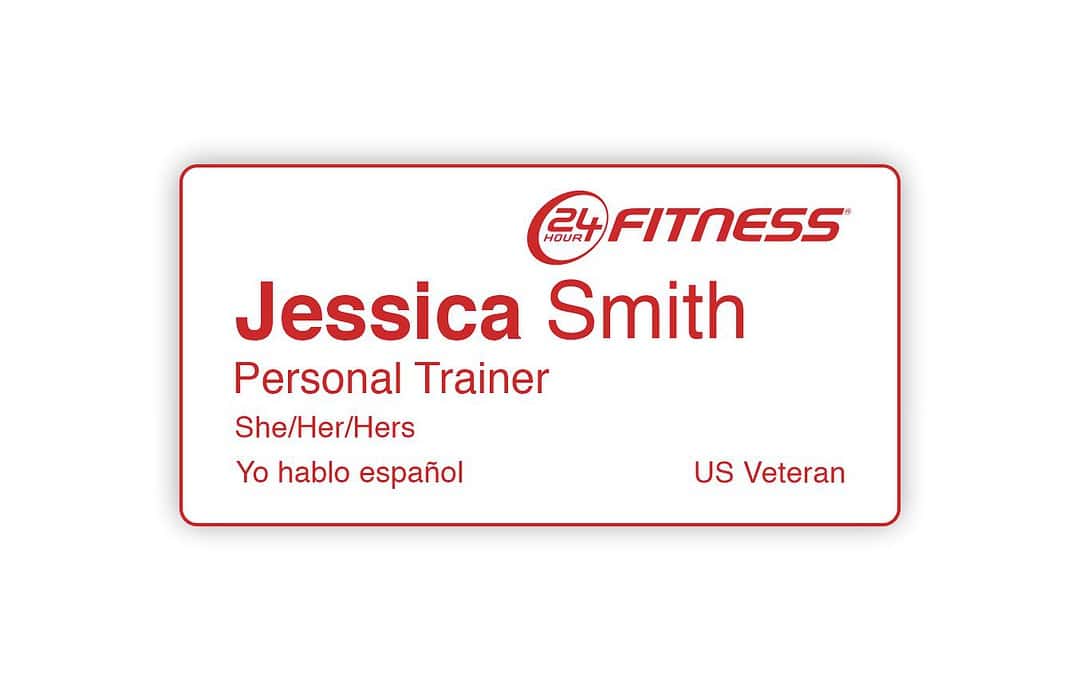In today’s diverse and interconnected world, creating inclusive and welcoming environments is more important than ever. Whether it’s in the workplace, at events, or in public spaces, small details can make a big difference in making everyone feel seen, respected, and valued. One such detail is the use of customized name badges, name plates, and signage that cater to the varied needs, identities, and preferences of all individuals.
At LoneStar Badge and Sign, we believe in the power of personalization to foster inclusivity and support. Here’s how our products can be tailored to embrace and celebrate diversity in all its forms.
1. Acknowledging Preferred Names and Pronouns
Why It Matters:
Using someone’s correct name and pronouns is a fundamental way to show respect and recognition of their identity. It creates a sense of belonging and reduces misunderstandings or discomfort.
Implementation Ideas:
- Pronoun Inclusion: Add a line beneath the individual’s name displaying their preferred pronouns (e.g., she/her, he/him, they/them).
- Preferred Names and Nicknames: Allow individuals to display the name they are most comfortable with, whether it’s a shortened version, a middle name, a nickname, or a preferred alternate name.
- Flexible Design Options: Offer designs that make pronouns and preferred names clearly visible yet seamlessly integrated into the badge or plate’s aesthetic.
Benefits:
- Promotes respect and understanding.
- Reduces instances of mis-gendering and associated discomfort.
- Encourages open and inclusive communication.
2. Highlighting Languages Spoken
Why It Matters:
Indicating the languages an individual speaks can enhance communication, provide better customer service, and make multilingual individuals feel valued for their skills.
Implementation Ideas:
- Language Icons or Text: Include flags or text indicating the languages the person is fluent in.
- Multilingual Signage: Create signs that display information in multiple languages to cater to diverse audiences.
Benefits:
- Improves accessibility and comfort for non-native speakers.
- Showcases the linguistic diversity and capabilities within your team.
- Enhances customer experience by facilitating better communication.
3. Celebrating Achievements and Service
Why It Matters:
Recognizing individuals’ accomplishments, years of service, and special recognitions fosters a culture of appreciation and motivates continued excellence.
Implementation Ideas:
- Years of Service: Include a notation of how long an individual has been part of the organization.
- Special Recognitions and Awards: Display notable achievements such as “Employee of the Month” or specific certifications and credentials.
- Military and Service Affiliations: Honor past or present military service by incorporating appropriate insignia or titles respectfully.
Benefits:
- Enhances employee morale and pride.
- Informs others of the individual’s experience and expertise.
- Creates opportunities for connection and recognition among peers and clients.
4. Ensuring Accessibility for All Abilities
Why It Matters:
Accessible design ensures that everyone, regardless of physical abilities, can navigate and interact with environments effectively and with dignity.
Implementation Ideas:
- Braille Integration: Include braille on name plates and signage to assist individuals with visual impairments.
- High-Contrast and Large Print: Use clear, high-contrast colors and larger fonts to improve readability for those with low vision.
- Tactile Signage: Incorporate raised lettering and symbols that can be felt by touch.
Benefits:
- Promotes independence and ease of navigation for individuals with disabilities.
- Complies with accessibility standards and regulations.
- Demonstrates a commitment to inclusivity and equal access.
5. Creating Inclusive and Gender-Neutral Spaces
Why It Matters:
Gender-neutral and inclusive spaces acknowledge and respect the diversity of gender identities, making all individuals feel comfortable and accepted.
Implementation Ideas:
- Unisex Restroom Signage: Use clear and inclusive symbols and terminology to indicate restrooms accessible to all genders
- Inclusive Language: Avoid gendered terms in signage and opt for neutral alternatives.
- Family and Accessibility Indicators: Include symbols that indicate facilities are equipped for families and individuals with disabilities.
Benefits:
- Creates a welcoming environment for transgender and non-binary individuals.
- Simplifies facility use for all patrons.
- Reflects modern values of equality and respect.
6. Respecting and Indicating Special Needs Sensitively
Why It Matters:
Discreetly acknowledging special needs ensures individuals receive appropriate support while maintaining dignity and respect.
Implementation Ideas:
- Medical Alerts on Badges: Include subtle indicators for allergies or medical conditions that first responders should be aware of.
- Communication Preferences: Display symbols or text indicating preferred methods of communication, such as sign language proficiency.
- Assistance Indicators: Use discreet symbols to indicate if someone may require additional assistance or patience.
Benefits:
- Enhances safety and preparedness in case of emergencies.
- Facilitates better and more respectful interactions.
- Empowers individuals by acknowledging their needs proactively.
Conclusion
Inclusivity is not just a buzzword; it’s a commitment to creating environments where everyone feels respected, valued, and supported. Through thoughtful and personalized design of name badges, name plates, and signage, we can make significant strides in fostering inclusivity across various settings.
At LoneStar, we are dedicated to providing customizable solutions that reflect and celebrate the diversity of all individuals. Let us help you create spaces and interactions that are welcoming and inclusive for everyone.
Ready to make your organization more inclusive? Contact us today to explore our range of customizable products tailored to meet all your inclusivity needs.

